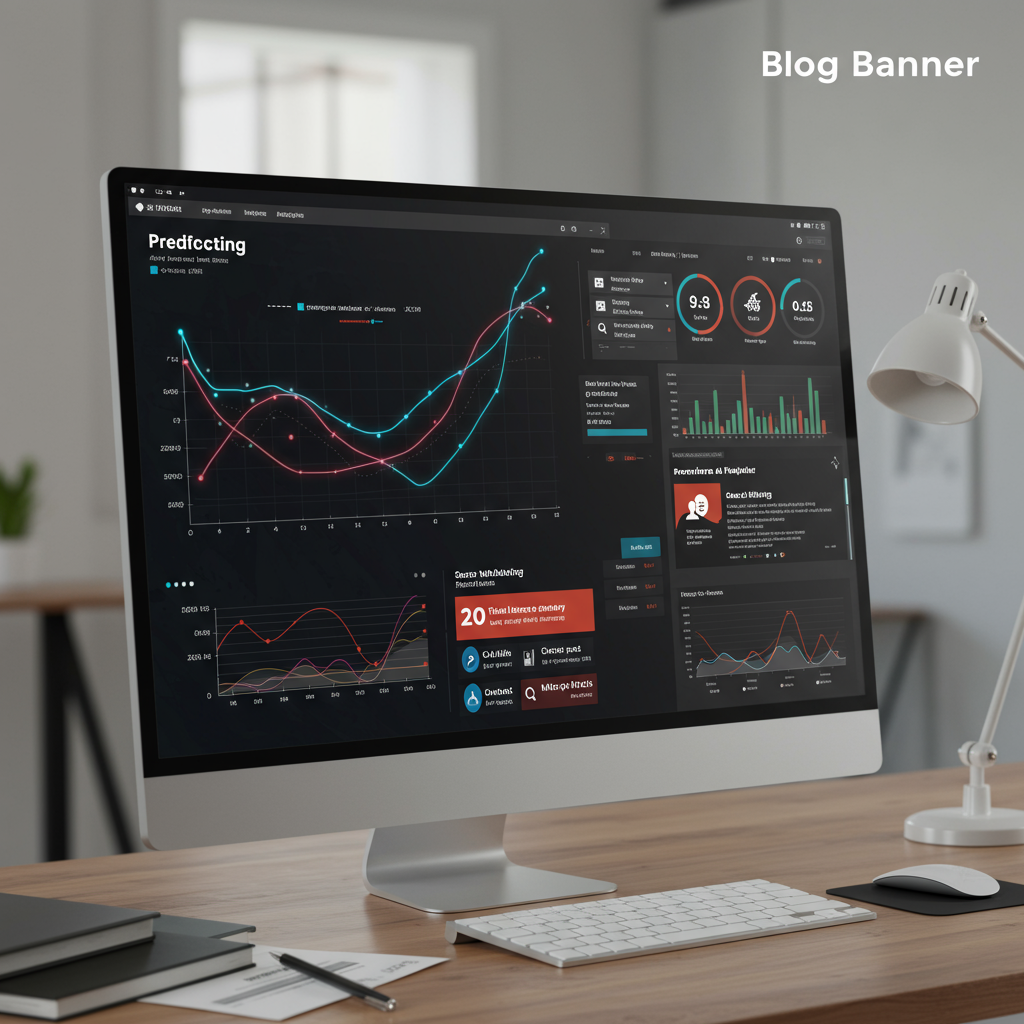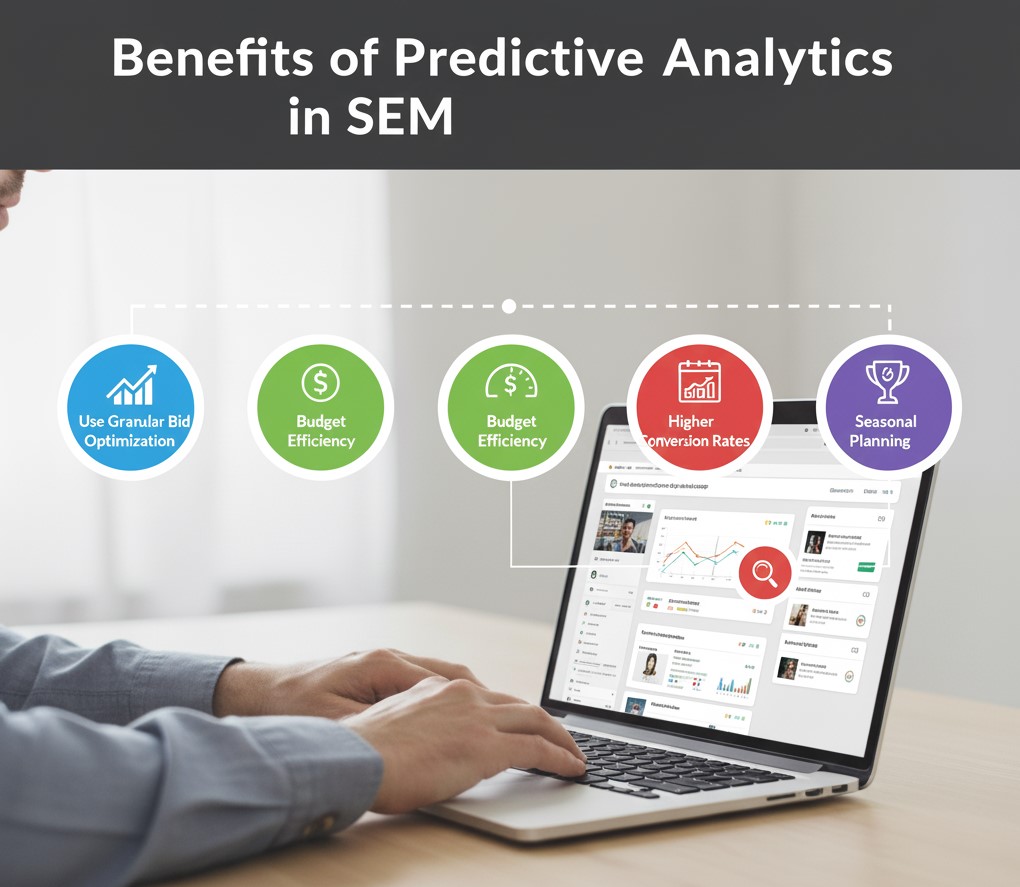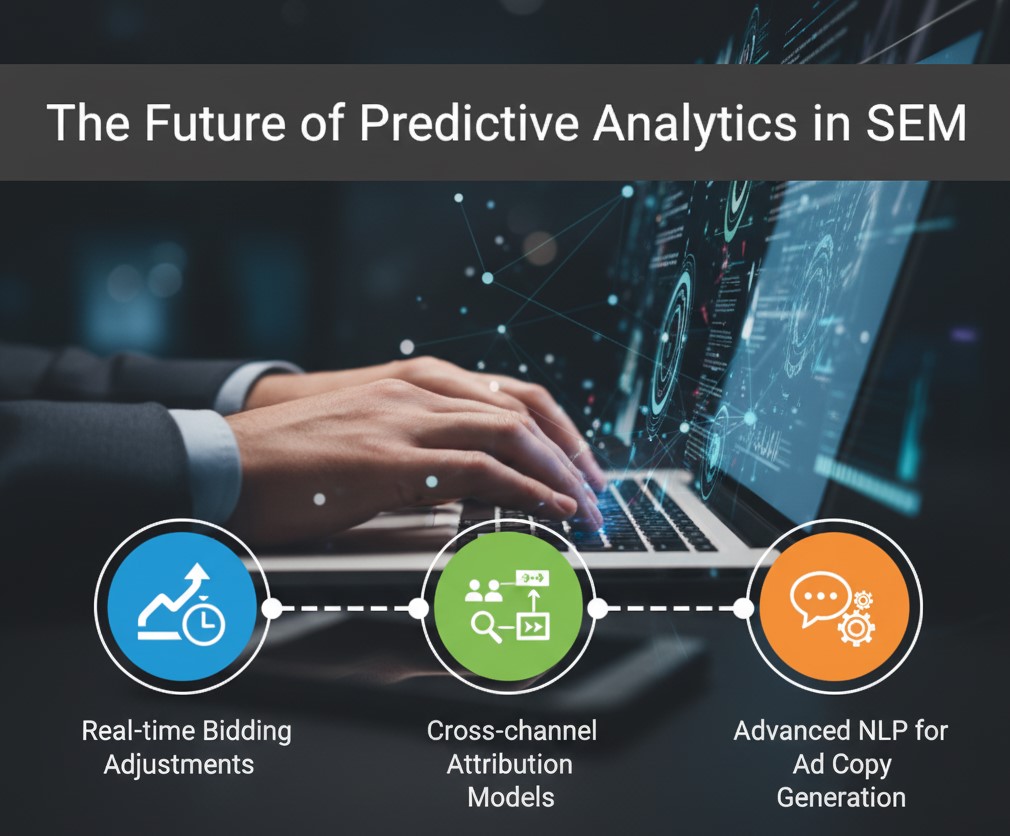
In the fast-paced world of Search Engine Marketing (SEM), staying ahead of trends and optimizing bids in real time can make the difference between average results and extraordinary ROI. Predictive analytics harnesses the power of historical data, machine learning algorithms, and statistical modeling to forecast outcomes, enabling marketers to make proactive decisions rather than reactive adjustments. In this comprehensive guide, we’ll explore how to integrate predictive analytics into your SEM campaigns, step by step.
1. Understanding Predictive Analytics in SEM
Predictive analytics uses data mining, statistical techniques, and machine learning to analyze current and historical data, identify patterns, and forecast likely future outcomes. In SEM, it can predict keyword performance, bid adjustments, conversion rates, and seasonal trends—empowering you to allocate budget and optimize campaigns before performance dips.
Key Components
- Data Collection: Compile historical SEM metrics—impressions, clicks, conversions, costs—for each campaign and ad group.
- Feature Engineering: Transform raw data into predictive features, such as time of day, device type, geography, ad position, and keyword intent scores.
- Model Selection: Choose algorithms (regression, decision trees, random forests, or gradient boosting) that suit your data volume and complexity.
- Validation & Testing: Split data into training and test sets to evaluate model accuracy, precision, and recall before deploying live predictions.
2. Benefits of Predictive Analytics in SEM

Integrating predictive analytics into your SEM workflow offers several compelling advantages:
- Proactive Bid Optimization: Forecast peak conversion times and adjust bids automatically to capture high-intent traffic precisely when it matters.
- Budget Efficiency: Identify underperforming keywords or segments before they deplete budget, reallocating spend to high-value areas.
- Higher Conversion Rates: Use predictive scoring to target audiences with the highest likelihood to convert, improving overall ROI.
- Seasonal Planning: Anticipate demand surges—holidays, product launches, events—and prepare campaigns in advance for maximum impact.
- Competitive Edge: Leverage data-driven insights to outmaneuver competitors who rely on manual optimizations alone.
3. Step 1: Data Collection and Preparation
The foundation of any predictive analytics initiative is high-quality data. Follow these best practices:
- Aggregate Historical Performance: Pull at least 6–12 months of SEM metrics from Google Ads, Bing Ads, or your chosen platform via API or CSV exports.
- Incorporate External Data: Merge CRM data (leads, sales), web analytics (bounce rates, session duration), and market factors (weather, holidays) to enrich your dataset.
- Cleanse and Normalize: Remove duplicates, fill missing values, and normalize numeric values to ensure consistency across features.
- Time-Series Formatting: Structure data in chronological order, with daily or hourly granularity, to capture temporal patterns.
4. Step 2: Building Your Predictive Model
With prepared data, you can now train and validate a predictive model. Here’s how:
Choosing the Right Algorithm
Common choices include:
- Linear Regression: Simple and interpretable for forecasting continuous metrics like CPC or conversion volume.
- Decision Trees & Random Forests: Handle nonlinear relationships and feature interactions well, ideal for categorical variables (device, location).
- Gradient Boosting Machines (XGBoost, LightGBM): State-of-the-art performance on structured data, though they require careful hyperparameter tuning.
Training & Validation
- Split Data: Use an 80/20 or 70/30 train/test split while preserving time order (train on older data, test on newer).
- Feature Importance: Evaluate which inputs (daypart, keyword intent, landing page speed) drive predictions, then refine your dataset.
- Performance Metrics: Measure RMSE (for continuous outputs) or accuracy/AUC (for classification tasks like conversion/no-conversion).
5. Step 3: Integrating Predictions into Your SEM Platform
Once your model delivers reliable forecasts, you’ll need to operationalize it within your SEM workflow:
- Automated Bid Adjustments: Use scripts or platform APIs to feed predicted CPC or conversion probability values back into bid strategies (Target CPA, Target ROAS).
- Budget Allocation: Generate daily or weekly budget recommendations by campaign or ad group based on forecasted performance.
- Alerting & Reporting: Set up dashboards and automated alerts for anomalies—when predicted performance deviates from actuals beyond a defined threshold.
6. Step 4: Testing & Continuous Improvement
Predictive analytics is not a “set it and forget it” solution. To maintain accuracy:
- Retrain Models Regularly: Schedule weekly or monthly retraining with the latest data to capture emerging trends.
- A/B Test Predictions: Compare model-driven bid strategies against a control group using your existing approach.
- Refine Features: Add or remove features based on shifts in performance—new device types, ad formats, or market conditions.
7. Real-World Case Study
A mid-sized e-commerce retailer implemented a predictive analytics model to forecast conversion rates by keyword and time of day. By feeding these predictions into their Google Ads scripts, they:
- Increased overall ROI by 35% within two months
- Reduced wasted spend on low-converting hours by 25%
- Captured a 20% uplift in incremental sales during peak shopping windows
Their success stemmed from continuous model refinement and tight integration between the data science team and SEM specialists.
8. Common Pitfalls & How to Avoid Them
- Overfitting: Training models too closely on historical quirks can harm future accuracy. Use cross-validation and limit overly complex models.
- Data Silos: Fragmented data sources slow insights. Centralize SEM, CRM, and web analytics into a unified data warehouse.
- Ignoring Business Context: Purely statistical models may miss emerging promotions or website issues. Always incorporate human judgment and business calendars.
9. The Future of Predictive Analytics in SEM

As machine learning frameworks evolve and platforms expose richer APIs, we can expect:
- Real-time bidding adjustments based on live user signals (session behavior, past purchases).
- Cross-channel attribution models that predict the combined impact of search, social, and display on conversions.
- Advanced NLP for ad copy generation, optimized on predicted click-through and conversion probabilities.
10. Conclusion
Predictive analytics transforms SEM from a reactive craft into a proactive, data-driven discipline. By forecasting performance, automating bid and budget adjustments, and continuously refining your models, you’ll achieve higher efficiency, improved ROI, and a sustainable competitive edge. Start small—pilot on a single campaign—then scale your predictive SEM strategies across your entire portfolio for maximum impact.
Ready to harness the power of predictive analytics in your SEM efforts? Begin by auditing your data sources, selecting a pilot campaign, and partnering your SEM specialists with data scientists to unlock tomorrow’s insights today.
Learn more about: Advanced Audience Segmentation in SEM: Master RLSA and Custom Intent Strategies


Leave a Reply